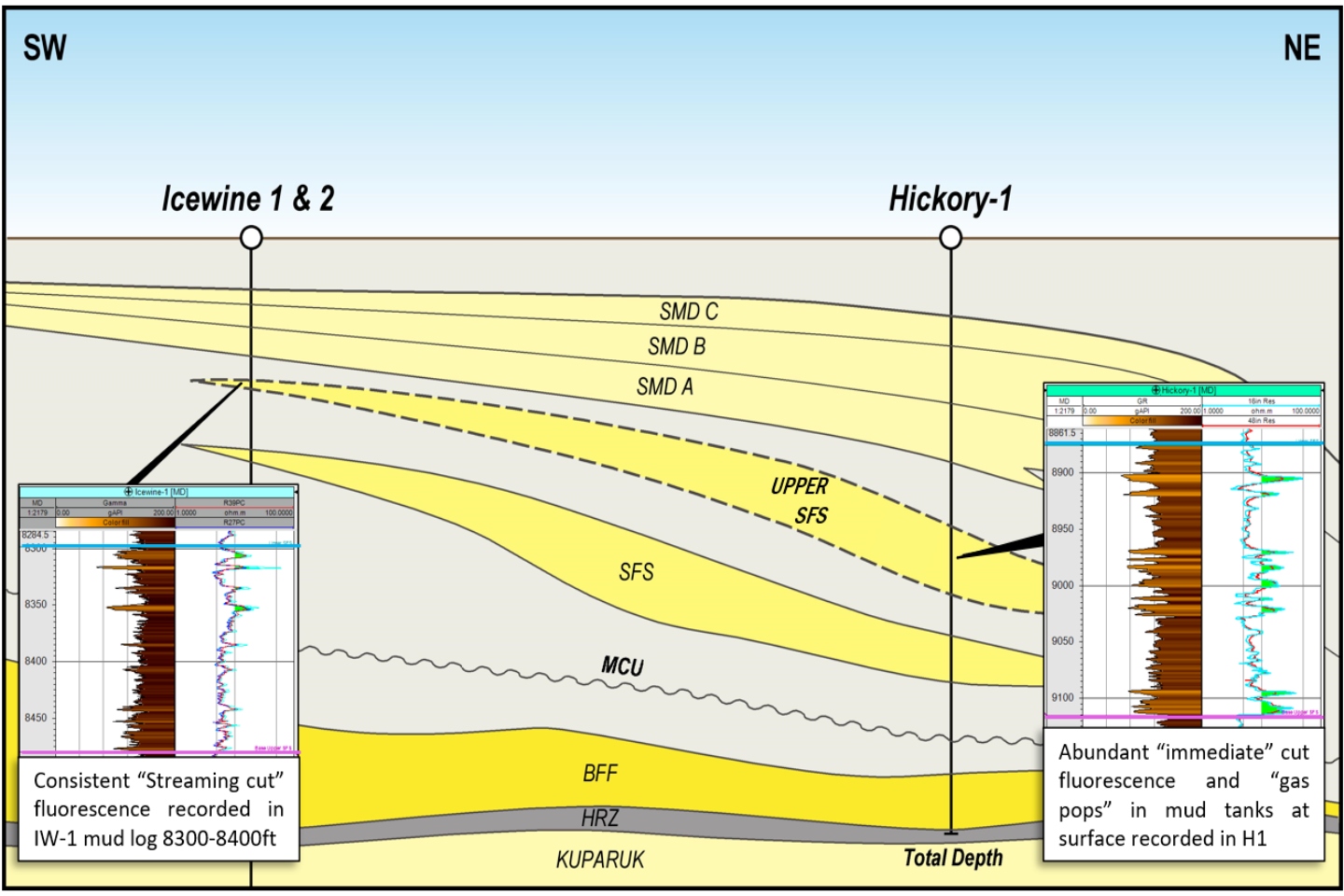88 Energy has boosted its Phoenix project in Alaska by mapping the Upper Slope Fan System reservoir an additional 7km further south than had previously been modelled. The Upper SFS reservoir boasted abundant oil shows and fifteen times background gas levels when drilled by the Hickory-1 well in March this year, causing the mud tanks to bubble. The Upper SFS represents a new resource addition for the project.

88 Energy has boosted its Phoenix oil and gas project in Alaska by mapping the Upper Slope Fan System (Upper SFS) reservoir an additional 7km further south than had previously been modelled.
The Upper SFS reservoir boasted abundant oil shows and fifteen times background gas levels when drilled by the Hickory-1 well in March this year, causing the mud tanks to bubble. The Upper SFS represents a new resource addition for the project.
The extended interpretation of the Upper SFS, which is based on seismic data, takes the reservoir interval south to tie into the Icewine-1 well at a level which also gave strong hydrocarbon shows while drilling, but was thought to represent a different sand interval.
The company says the Upper SFS remains untested at the Phoenix project but it remains optimistic given the quality and strength of hydrocarbon shows recorded during drilling are supported by two other pieces of data – wireline logs and sidewall cores.
According to the company, preliminary evaluation of the wireline data suggests the Upper SFS contains about 110m of gross and 24m of net pay with porosity values ranging from 10.5 per cent to about 16 per cent. The interval showed “crossover” of neutron and density logs suggesting it is made up of porous sandstone containing oil in those pore spaces – a bit like a hardened oil-soaked sponge.
Analysis of sidewall core data in the Upper SFS indicates the fluid maturity to be in the early-peak oil window, confirming the organic matter in the source rock has been adequately matured to bear oil.
As 88 Energy prepares to flow test Hickory-1, it has built simulation models for each of the four intervals to be tested with the objective of ensuring a successful stimulation and flow test for each.
Management says the simulations incorporate offset well data including those drilled by Pantheon resources in adjacent northern acreage, which produced modest flow rates during testing between 50 and 100 barrels of oil per day from a number of vertical wells.
googletag.cmd.push(function() { googletag.display('bn-dfp-article-lb2-advert'); });Significantly, the vertical well test results provide insight into how long horizontal development wells may behave. History has shown that using unconventional completion techniques in horizontal wells my increase flow rates by 6 to 12 times those seen in vertical wells with analogous geology.
Management says it is currently sourcing long lead items for its Hickory-1 flow test with permitting on track to be complete before the newly secured Rig 111 re-enters the suspended hole early next year during the Alaskan winter.
Rig 111 will be contracted from All American Oilfield, a wholly owned subsidiary of Chugach Alaska Corporation, which is an Alaskan Native Corporation founded in 1971. The machinery recently had upgrades completed on its mast and 88 Energy says it is well suited for the task.
The flow test at Hickory-1 will provide management with hard-data to ground truth estimates and potentially demonstrate the existence of moveable petroleum in the reservoirs by establishing flow to the surface. It may also provide an indication of the potential productivity of the reservoir.
88 Energy is the operator of project Phoenix, previously called Icewine East, and has a 75 per cent stake in the 250-square-kilometre site. The project is surrounded by market-ready infrastructure, as it sits adjacent to the Trans Alaskan Pipeline (TAP) and the 666km-long Dalton Highway that runs from Deadhorse in the north to the Elliot Highway in the south.
The TAP provides the company with immediate export infrastructure and is one of the world’s biggest oil pipeline systems, consisting of 11 pump-stations and the ice-free Valdez marine terminal at its southern terminus.
The current un-risked net prospective oil resource range for the Phoenix project is from a low-case (1U) value of 167 million standard barrels of oil (MMstb) to a high-case (3U) value of 1570 MMstb, with a best-case estimate (2U) of 621 MMstb and a mean of 647 MMstb of oil.
With a new reservoir in the Upper SFS waiting to flow, those numbers may well grow now.
Is your ASX-listed company doing something interesting? Contact: matt.birney@businessnews.com.au














